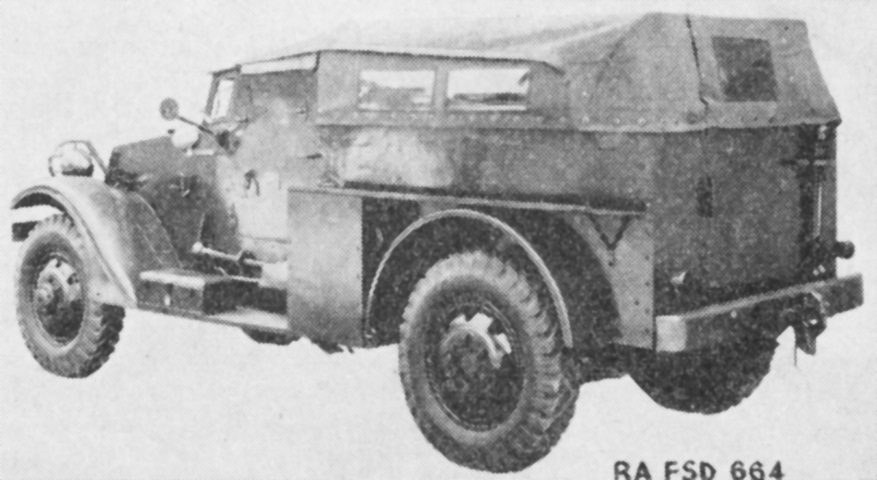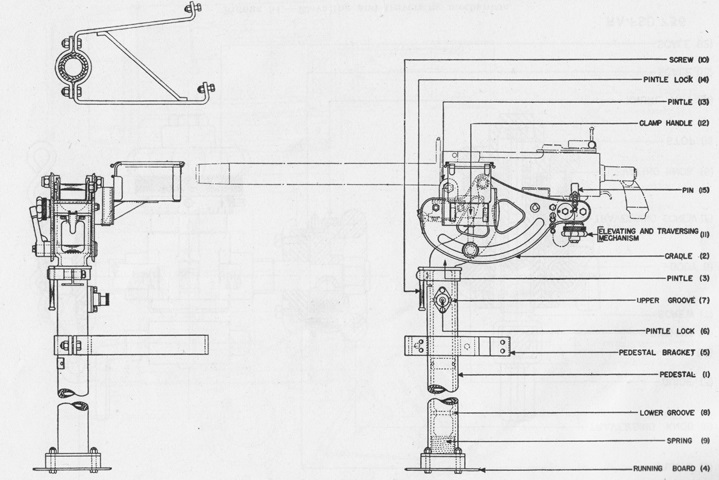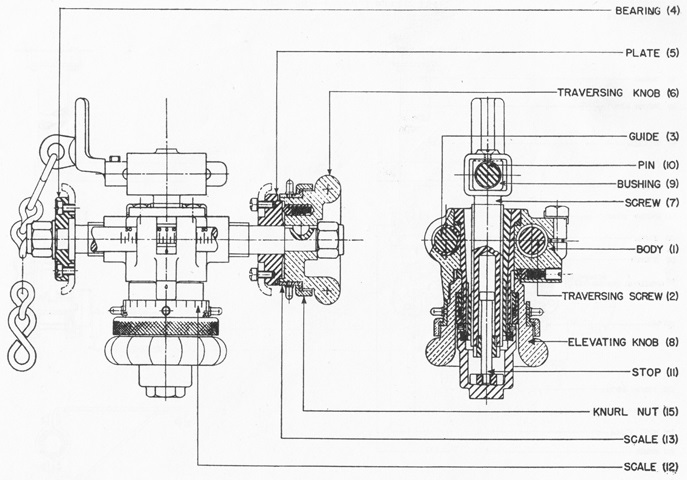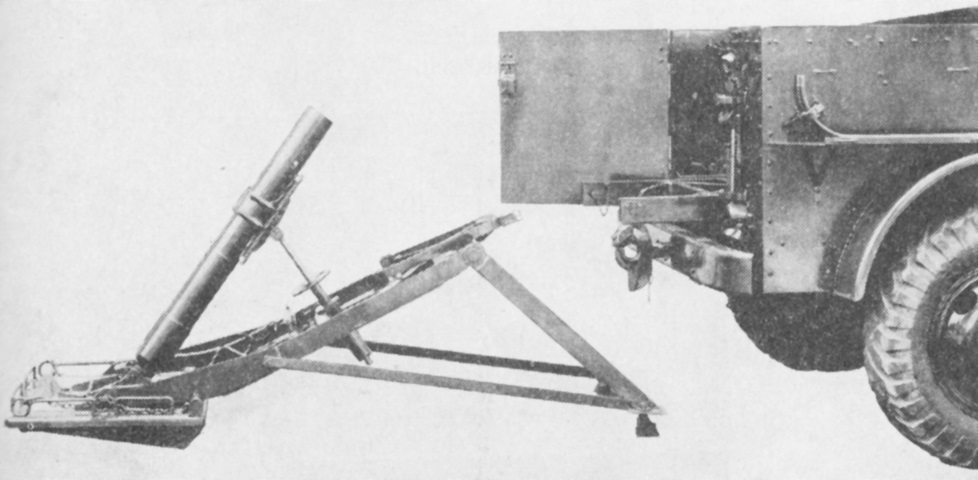
4.2" Mortar Motor Carriage M2.

The transition to a mortar carriage involved the deletion of the machine gun rail and rearrangement of the car interior. With the armor flap on the door lowered, the absence of the gun rail can easily be seen. A .30cal machine gun was instead provided on the right running board in a pedestal mount. The bag on the right front fender was for stowing the canvas top and window curtains. (Picture from TM 9-705 Scout Cars, M3, M3A1, and 4.2 Mortar Motor Carriage, M2.)

The removable canvas top is installed on this carriage. (Picture from TM 9-705 Scout Cars, M3, M3A1, and 4.2 Mortar Motor Carriage, M2.)

The rear door found in the scout car M3 eased mounting and dismounting the mortar. (Picture from TM 9-705 Scout Cars, M3, M3A1, and 4.2 Mortar Motor Carriage, M2.)

The pedestal mount T34 is sketched in this drawing. (Picture from TM 9-705 Scout Cars, M3, M3A1, and 4.2 Mortar Motor Carriage, M2.)

The elevation and traverse mechanism for the pedestal machine gun mount is diagrammed here. Bushing (9) was so designed to allow for a bit of motion in the line of recoil. A click mechanism emitted a perceptible click for every 1 mil change of elevation or traverse inputted by the gunner. (Picture from TM 9-705 Scout Cars, M3, M3A1, and 4.2 Mortar Motor Carriage, M2.)

The layout of the mortar compartment is shown here. The mortar could be fired either while attached to the vehicle as shown in the left two images (60° elevation available) or while detached (45-60° elevation available). The travel position of the mortar, with the baseplate attached to the vehicle vertically by securing Chain (14) to adjustable Hook (15), is ghosted in the lower left image. Screw (4) was used for traversing the mortar, while Screw (7) was for elevation. The Drag Bars (12) supported the carrier's rear and stabilized the mortar, and were attached to the vehicle by trunnions and to Base Plate (8) by chains. (Picture from TM 9-705 Scout Cars, M3, M3A1, and 4.2 Mortar Motor Carriage, M2.)

The location of the stowed mortar is shown here, along with the two rear-facing crew seats in the rear compartment. The mortar ammunition rack was between the two gun crew seats and the three seats in the cab, and the rear seats had to be removed to access this rack. (Picture from TM 9-705 Scout Cars, M3, M3A1, and 4.2 Mortar Motor Carriage, M2.)

Here, the mortar is ready for firing while attached to the vehicle. (Picture from TM 9-705 Scout Cars, M3, M3A1, and 4.2 Mortar Motor Carriage, M2.)

The mortar has been detached from the carrier in this picture. (Picture from TM 9-705 Scout Cars, M3, M3A1, and 4.2 Mortar Motor Carriage, M2.)